
“Tennis taught me so many lessons in life. One of the things it taught me is that every ball that comes to me, I have to make a decision. I have to accept responsibility for the consequences every time I hit a ball.” –Billie Jean King
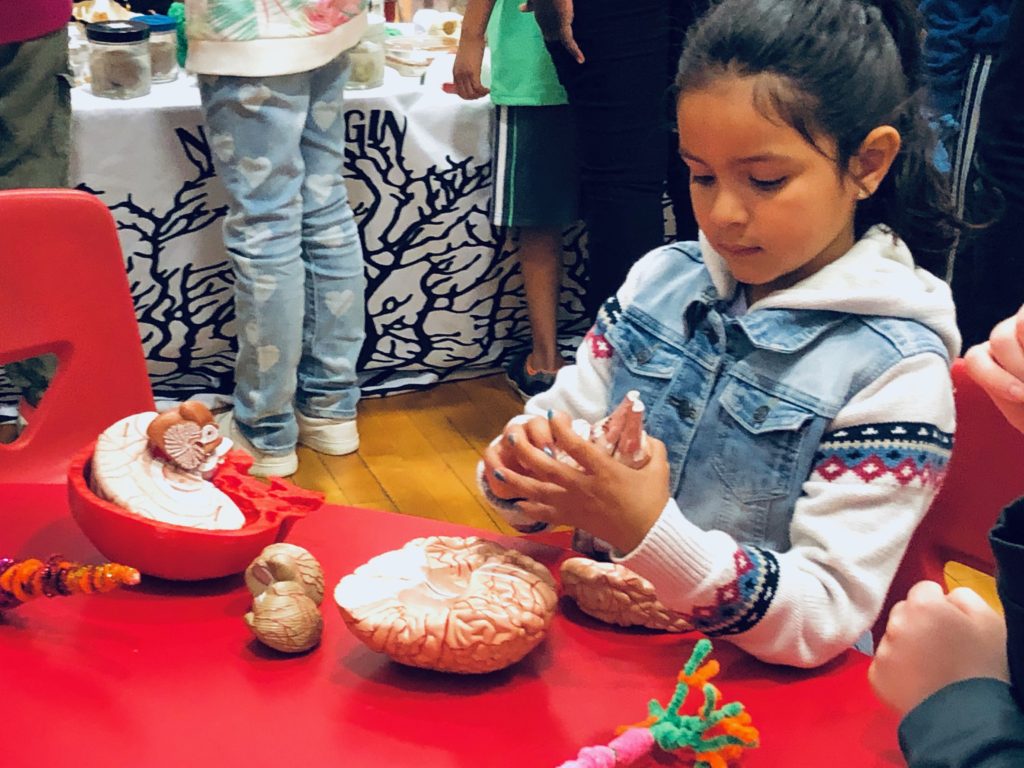
Like neurons, our excitatory neuroscience outreach volunteers LOVE reaching out to listen, learn and link up with people in our own community. And not just those with substantial resources…
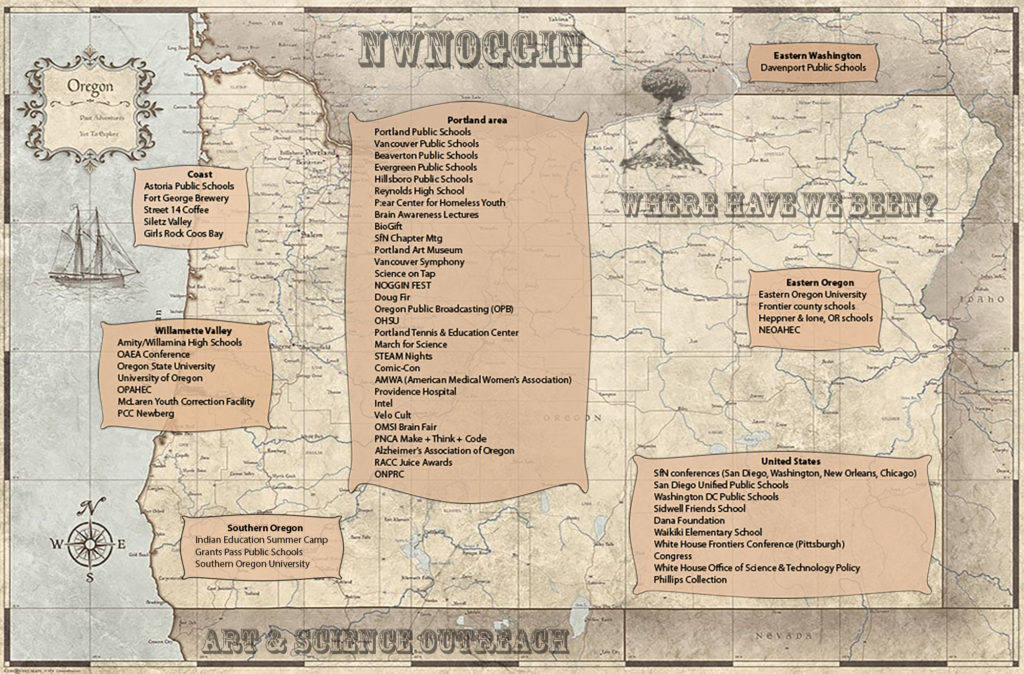
Since 2012, we’ve examined brains, made cerebral art, introduced our diverse area graduates and undergraduates and discussed federally funded neuroscience research with more than 30,000 people in academic priority schools, tribal majority schools, rural communities, coffee shops, homeless youth shelters, museums, youth correctional facilities, bicycle shops, Congress and other public venues.
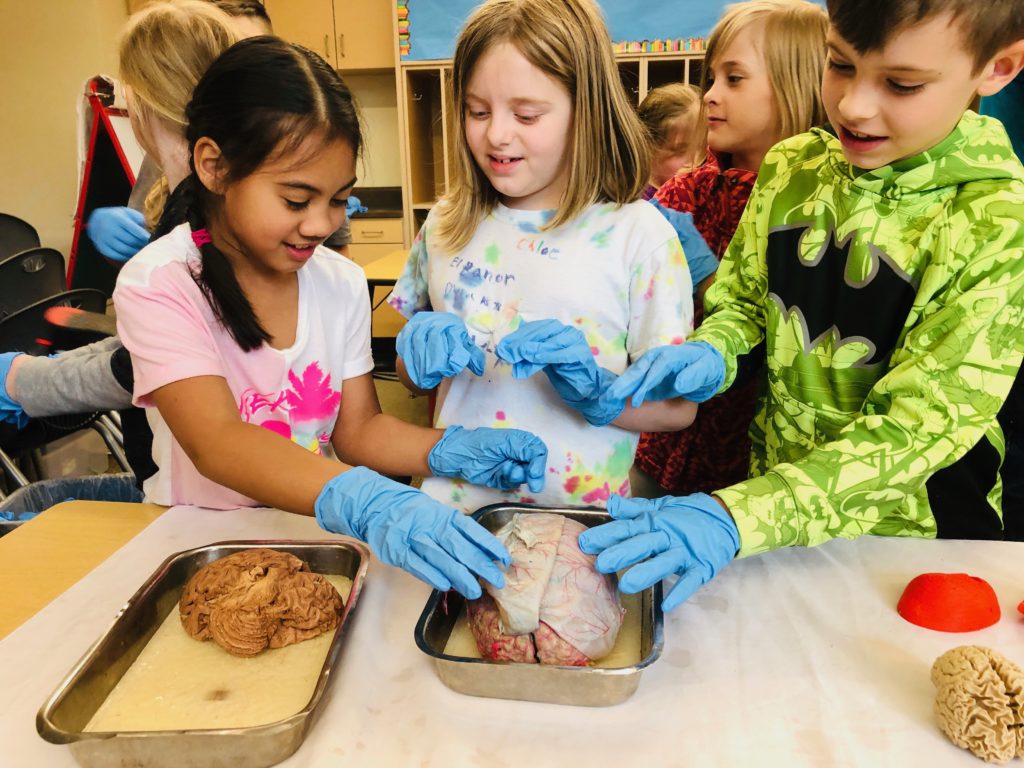
We’ve even taken brains to the streets!
LEARN MORE: What is NW Noggin..?
LEARN MORE: Noggin Bloggin
So when Dr. Stephanie Cacioppo, Director of the Brain Dynamics Laboratory at the University of Chicago Pritzker School of Medicine and the first female President of the Society for Social Neuroscience approached us about connecting with an innovative local nonprofit known as Portland Tennis & Education, we leapt at the chance to meet…
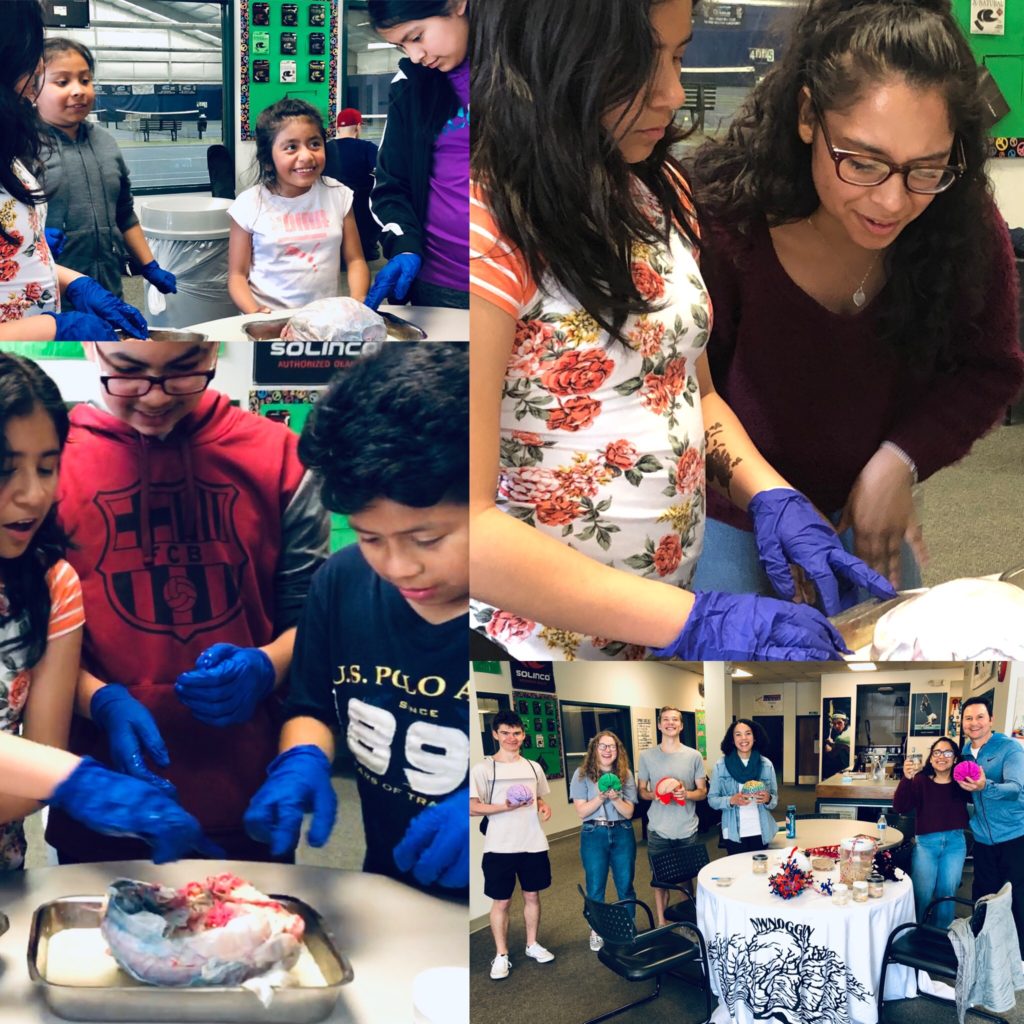
Portland Tennis and Education, founded by Dr. Ernest Hartzog, offers free “one-on-one tutoring, group tennis instruction, life skills instruction, and parent advocacy and training to K-12th grade participants year round.” They are “dedicated to the academic success and lifelong health of Portland’s underserved youth, supporting them in becoming well-rounded learners, exceptional athletes, and global citizens.”
LEARN MORE: About Portland Tennis and Education
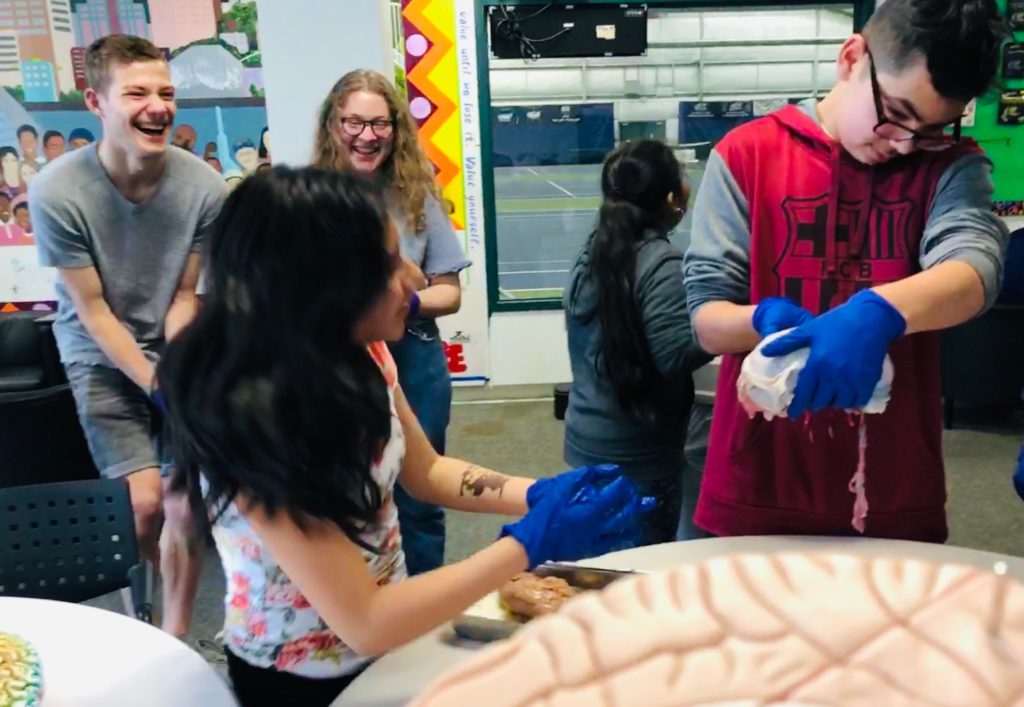
We visited Portland’s St. Johns neighborhood in April 2019 to meet with Executive Director Jorge Fuenmayor, Assistant Development Director and Volunteer Coordinator Mikayla Posey, and Associate Director Stephanie Haas, who was planning a new anatomy course for summer…
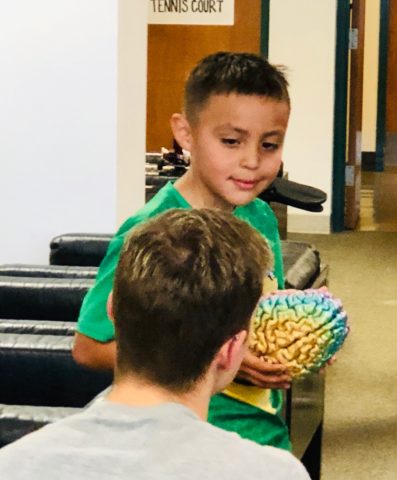
James Shasteen, Mitch Tolander and Olivia McBride from Portland State University‘s University Studies Freshman Inquiry (“FRINQ”) course on the Science of Creativity and Learning, and Natalie May and Sulema Rodriguez from PSU’s NIH BUILD EXITO program, enjoyed the chance to discuss our Noggin brains, and answer insightful questions about neuroscience. We also made plans to return in June…

This week we wheeled our artist-designed Noggin cart back into Portland Tennis and Education to further explore neuroanatomy with Stephanie Haas’s classroom of curious K-3rd grade kids!
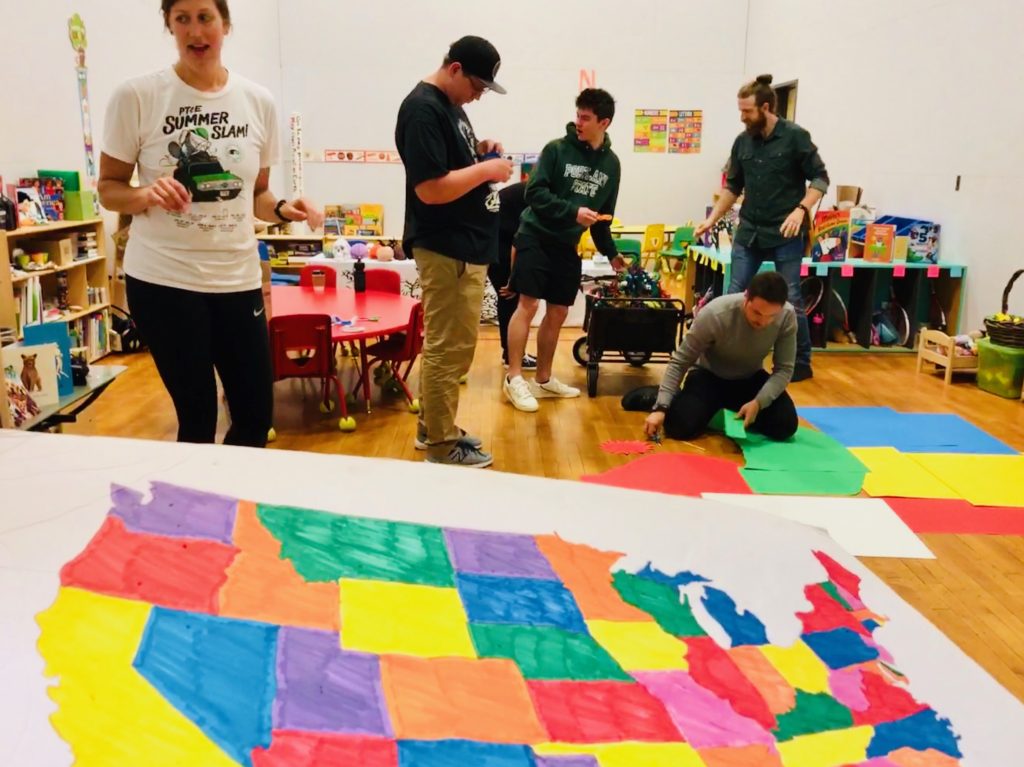
We first prepared a colorful “brain map” on the floor, labeling frontal, parietal, temporal and occipital lobes, the cerebellum and brainstem, and added both the hippocampus and amygdala to the temporal lobe…
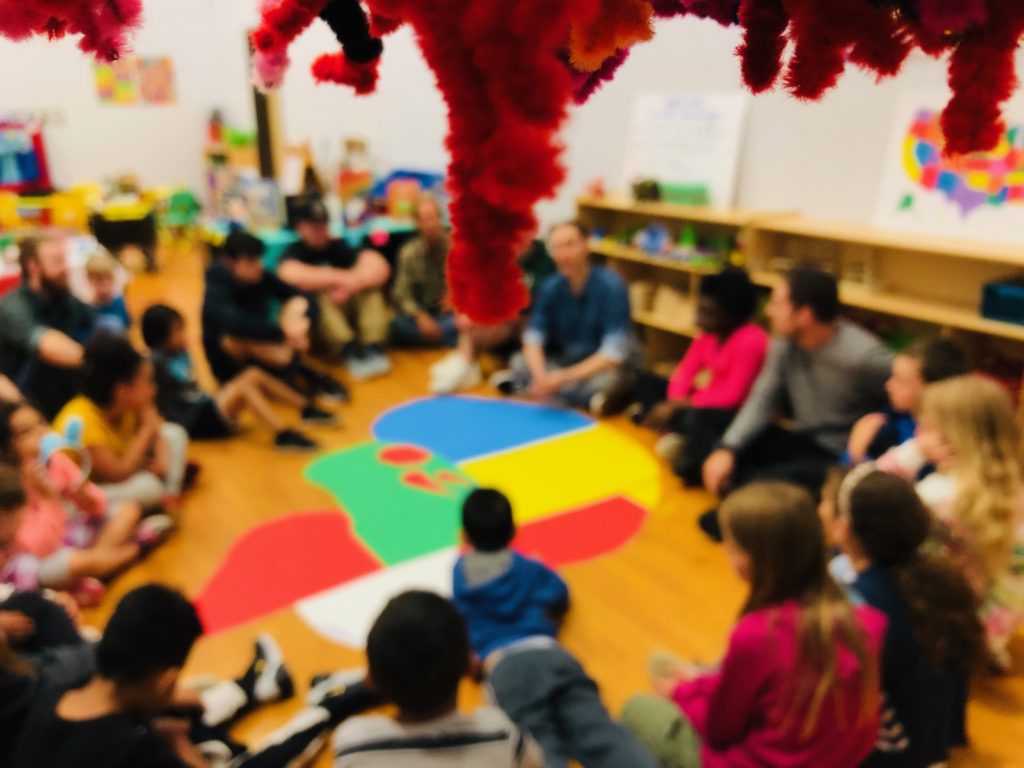
LEARN MORE: Brain Map STEAM Art Project
We then delved into introductions, explaining who we are, what fascinates us, and where we currently study, teach and conduct research. Letting kids know what educational and career options are out there helps build new connections and inspires pursuit of opportunities and dreams…
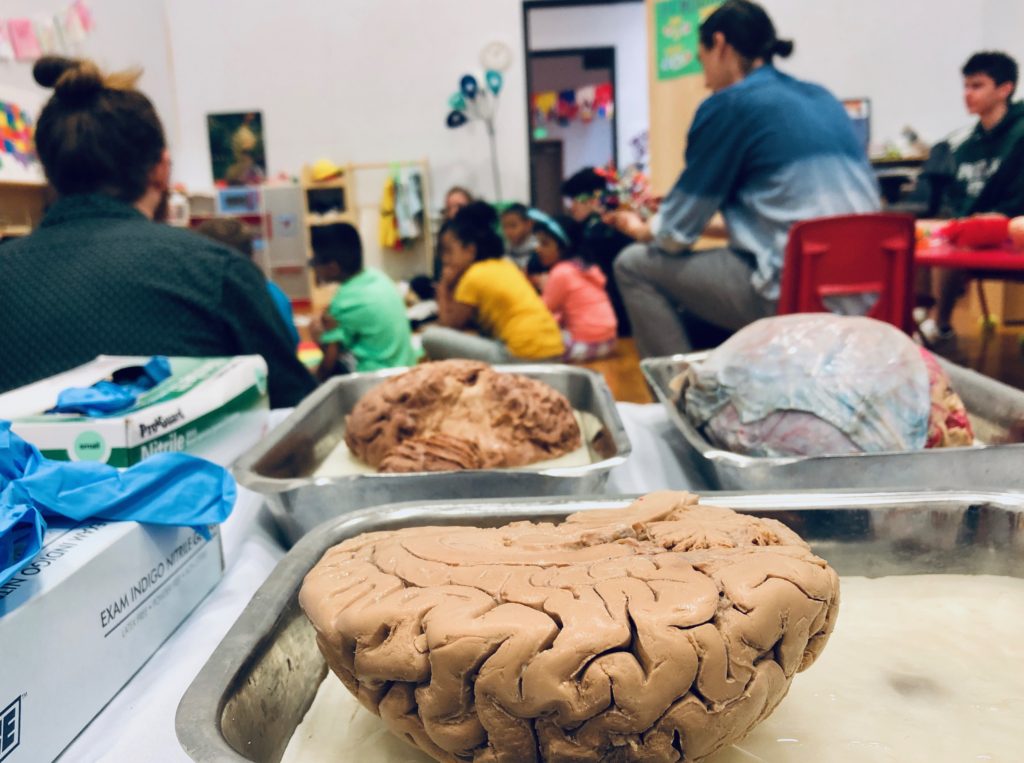

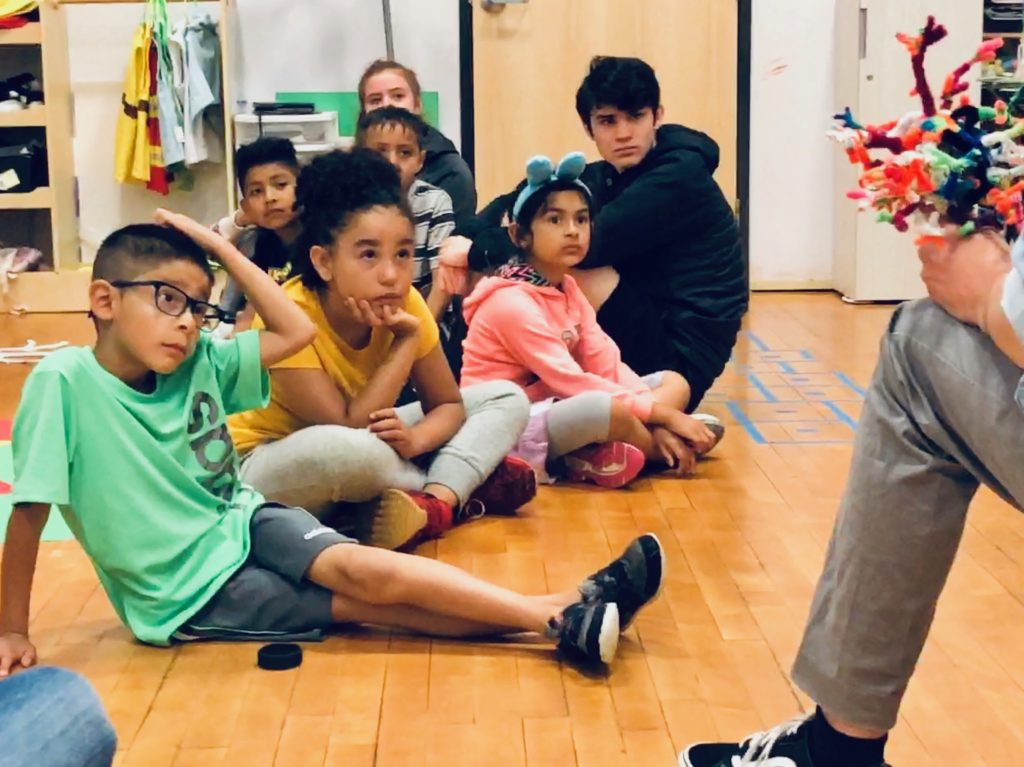
And then came the questions!!
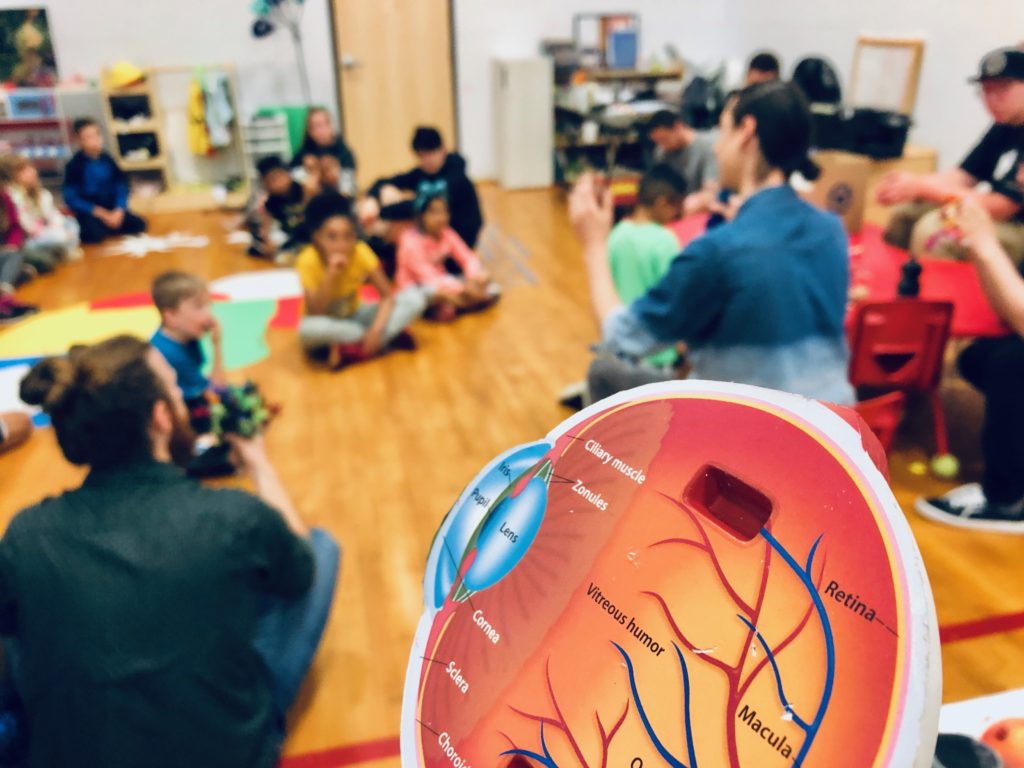
“How are my eyes connected to my brain? How come some kids can’t see certain colors?”
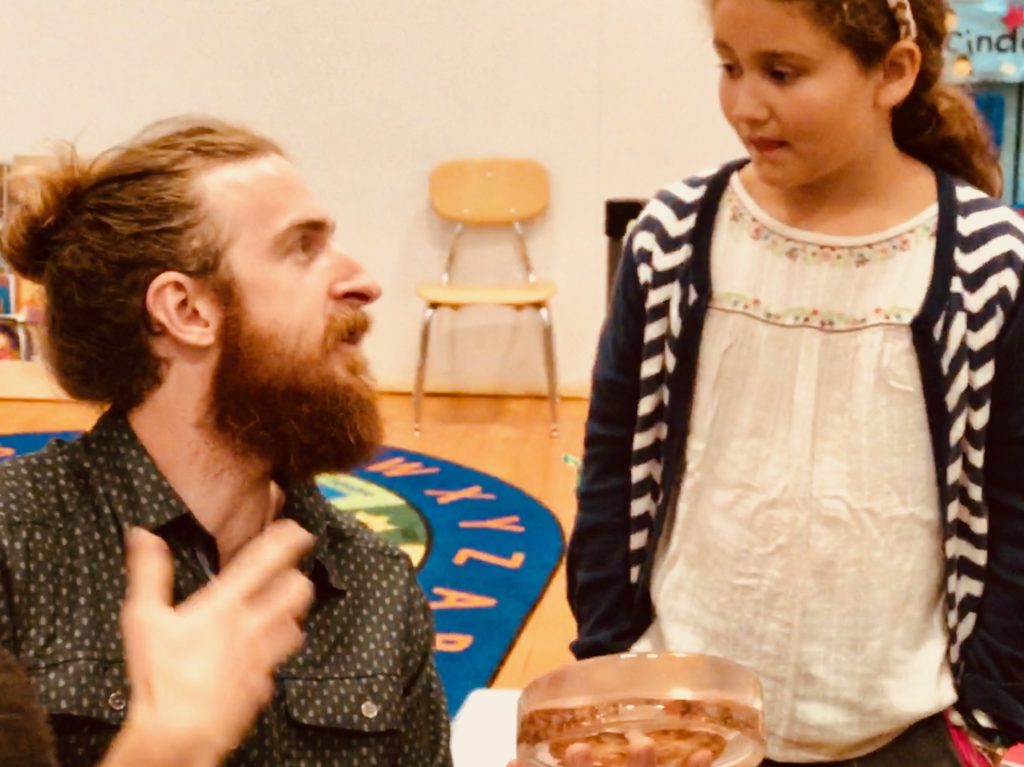
We described photoreceptors, specialized sensory neurons at the back of each eyeball (in a layer of cells called the retina) which convert light energy into changes in neural activity. Photoreceptors connect (synapse) with other cells that have long axonal wires which form our optic nerves, cables for sending visual information back to specific areas of our brain…
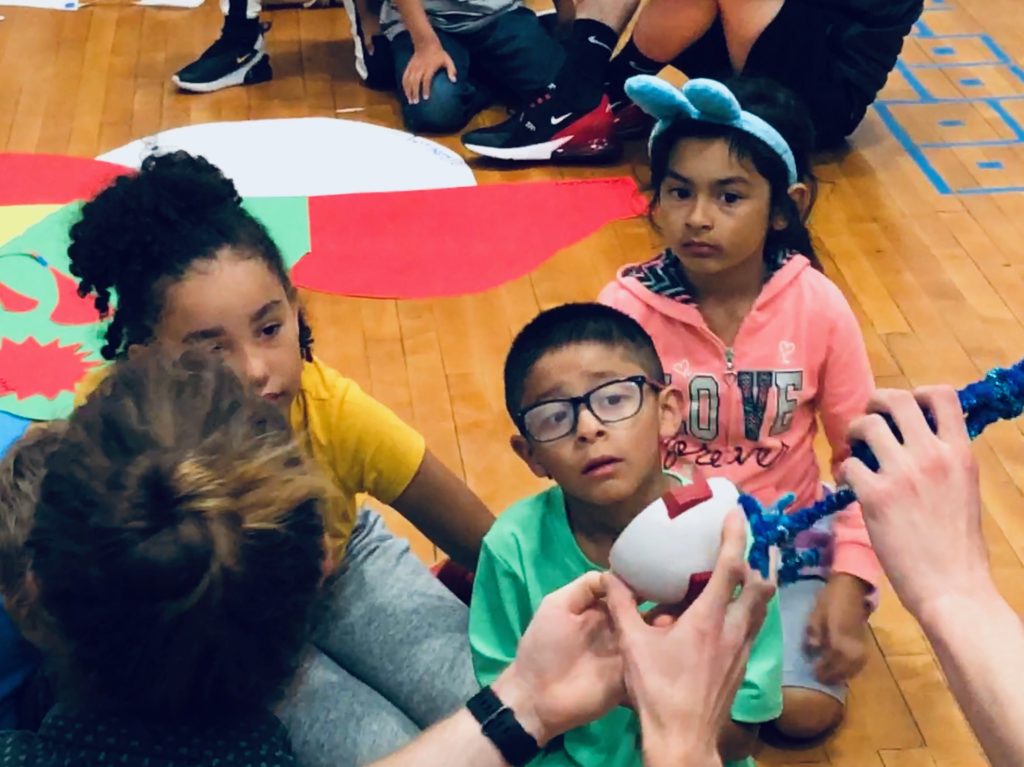
We brought out photoreceptors (in pipe cleaners!), including a few known as cone cells. Most of us have three distinct types of cones, each expressing a pigment that maximally absorbs a different wavelength of light (generally correlating with our perceptions of red, green and blue). Yet some people have two functional cones, or only one. In either case, they would then detect – and perceive – fewer colors…

LEARN MORE: Hallucinations @ HeLa High
Our volunteers, including Christian Schoen, Jacob Schoen, Aaron Eisen, Luis Carillo, James Shasteen and Thomas Rounds from PSU, described various brain structures, and took more questions. So many more questions!
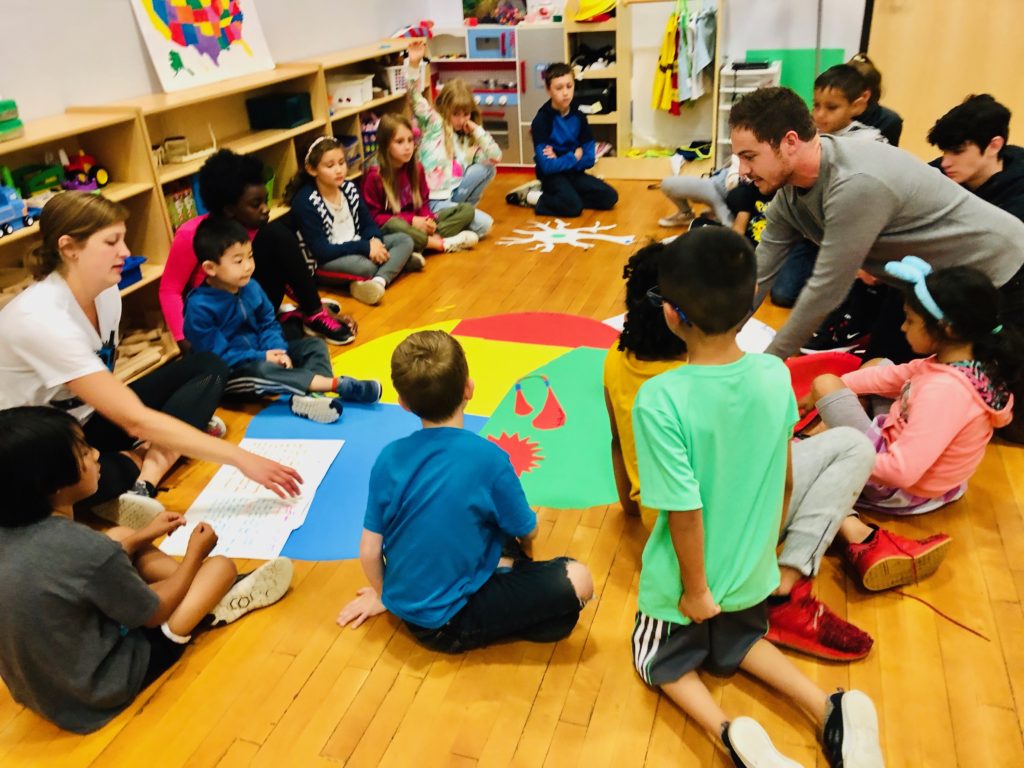
“Where do I get motivated in the brain? How does my brain let me keep going when things don’t work out?”
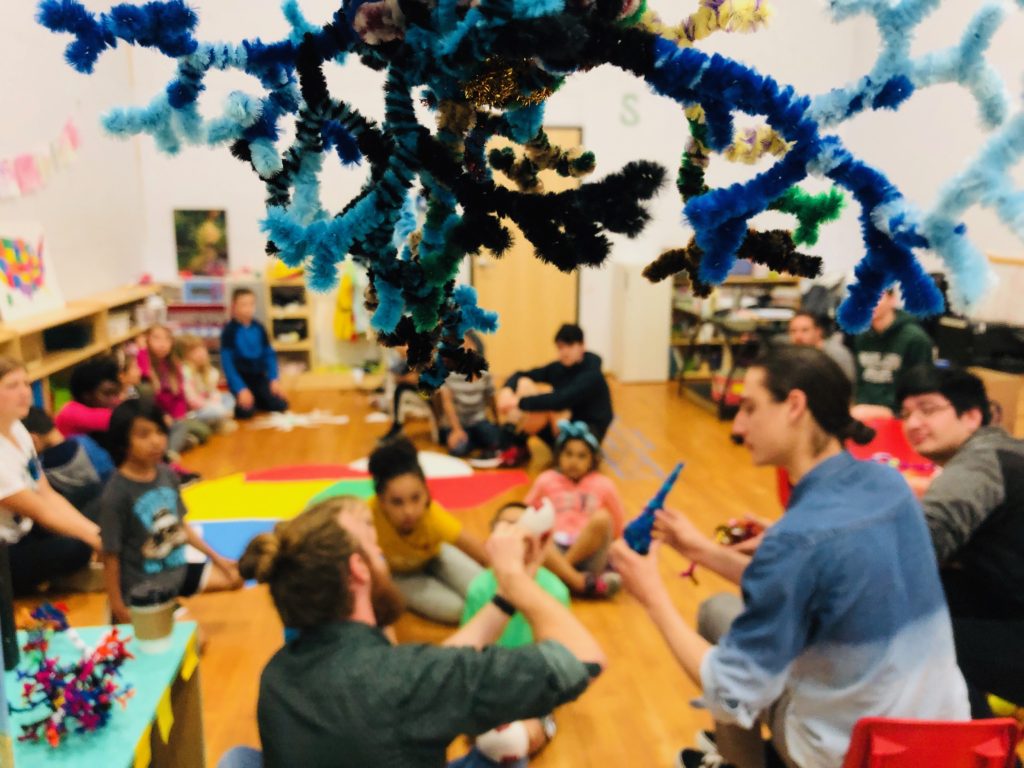
We emphasized the extraordinary adventure of adolescent development, and how our social brains learn from social experience – through practice, risk taking, hard work, thrilling success, embarrassing error, and often complex, occasionally painful consequences…

“Hard work pays off in the end and we are really happy about it. This keeps us motivated. Today we started with a certain strategy but it wasn’t working, so we had to change it up. It paid off in the end. We just hung in there” ―Juan Sebastian Cabal
LEARN MORE: Special issue on the teenage brain: Sensitivity to social evaluation
LEARN MORE: The Social Brain: Neural Basis of Social Knowledge
LEARN MORE: Maturation of the adolescent brain
And then we got up, moved our bodies, and got a chance to ask still more questions – while examining real human and animal brains!
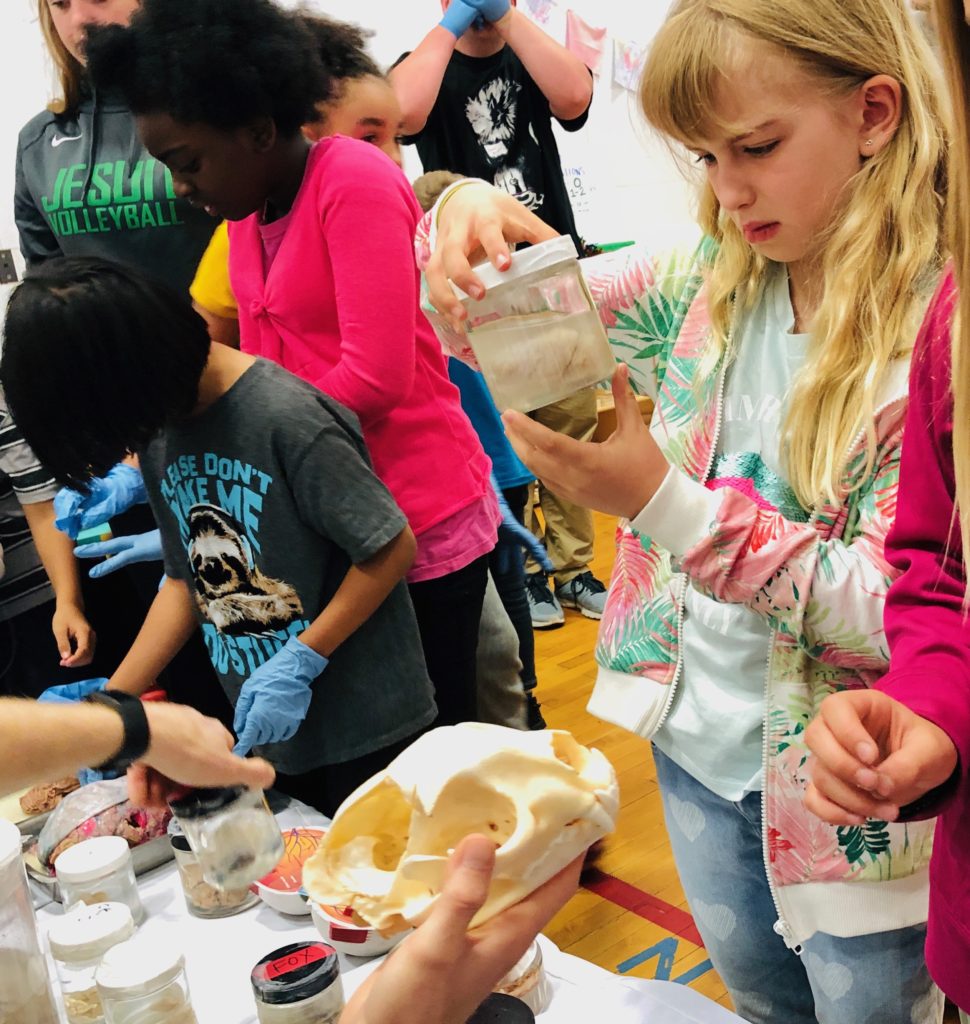
“What happens in my brain when I sleep?“
LEARN MORE: Noggins in Nod
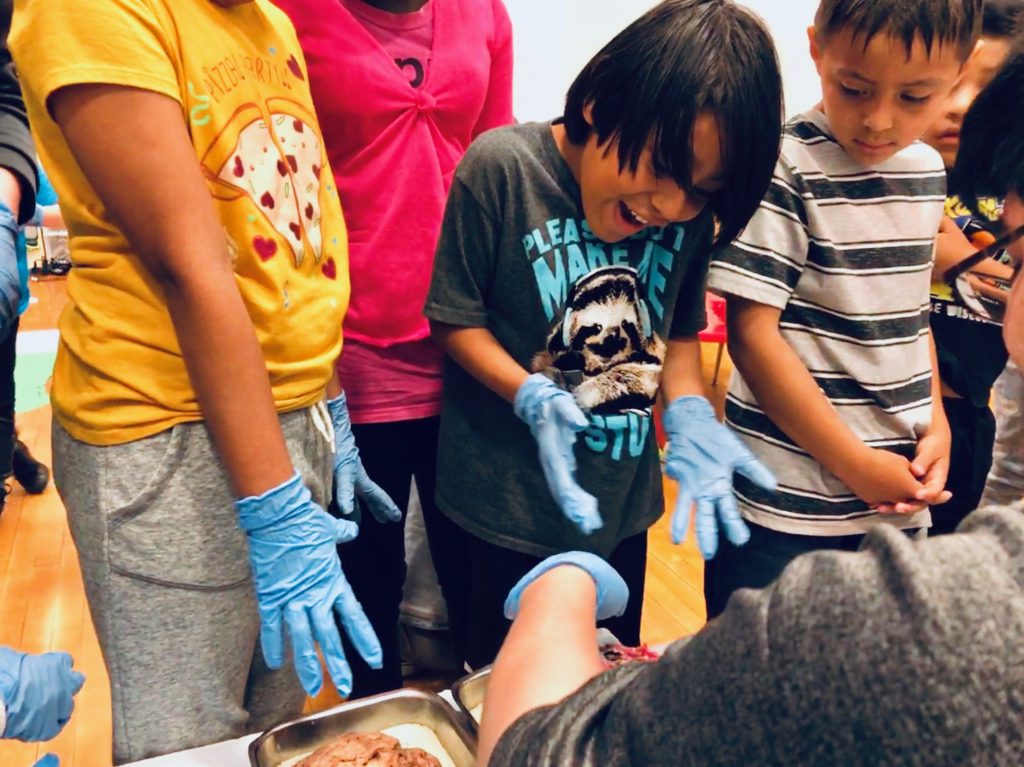
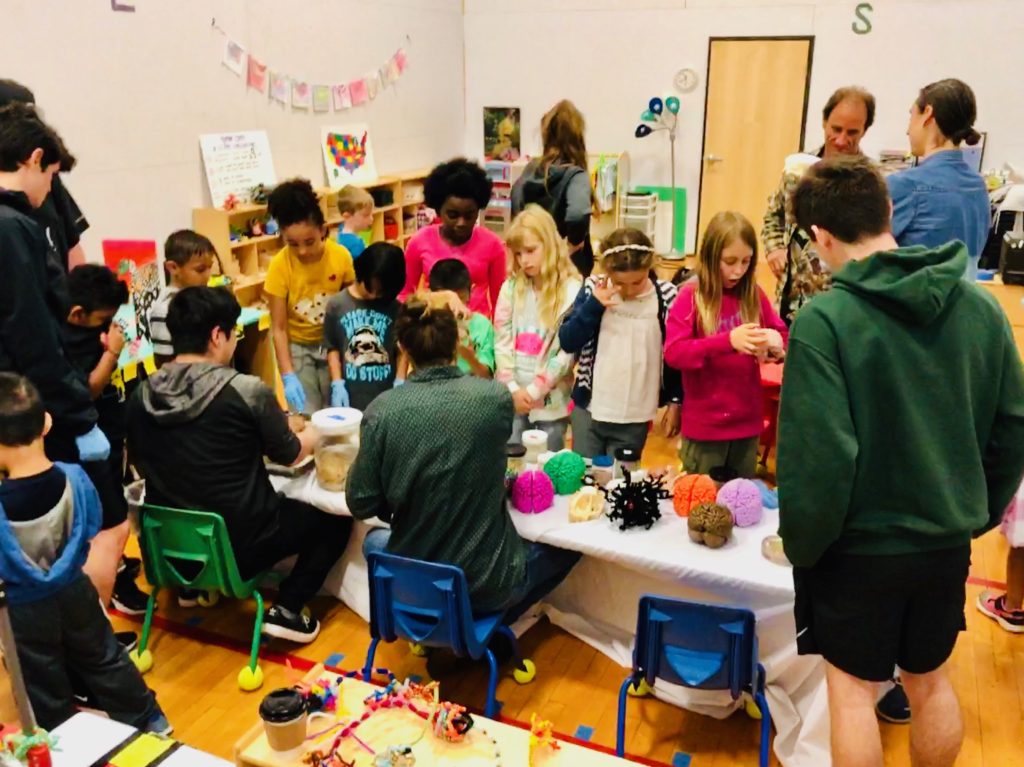
“Why do I have nightmares?“
LEARN MORE: Aspects of sleep disorders in children and adolescents
LEARN MORE: Rapid eye movement sleep behaviour disorder in children and adolescents
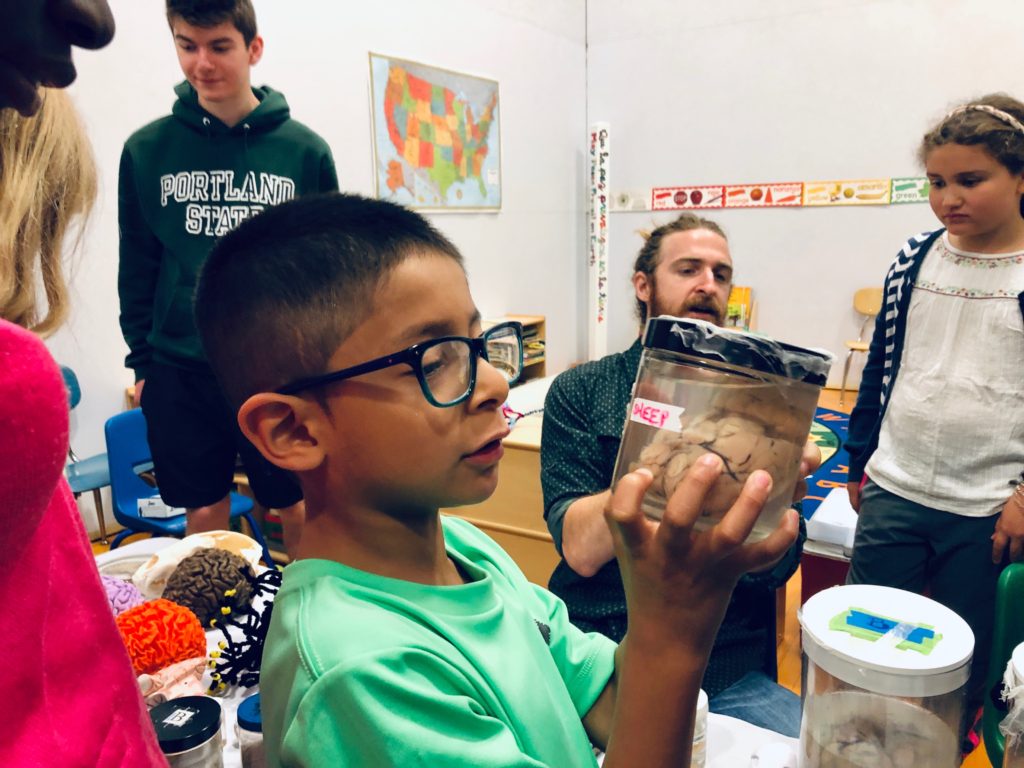
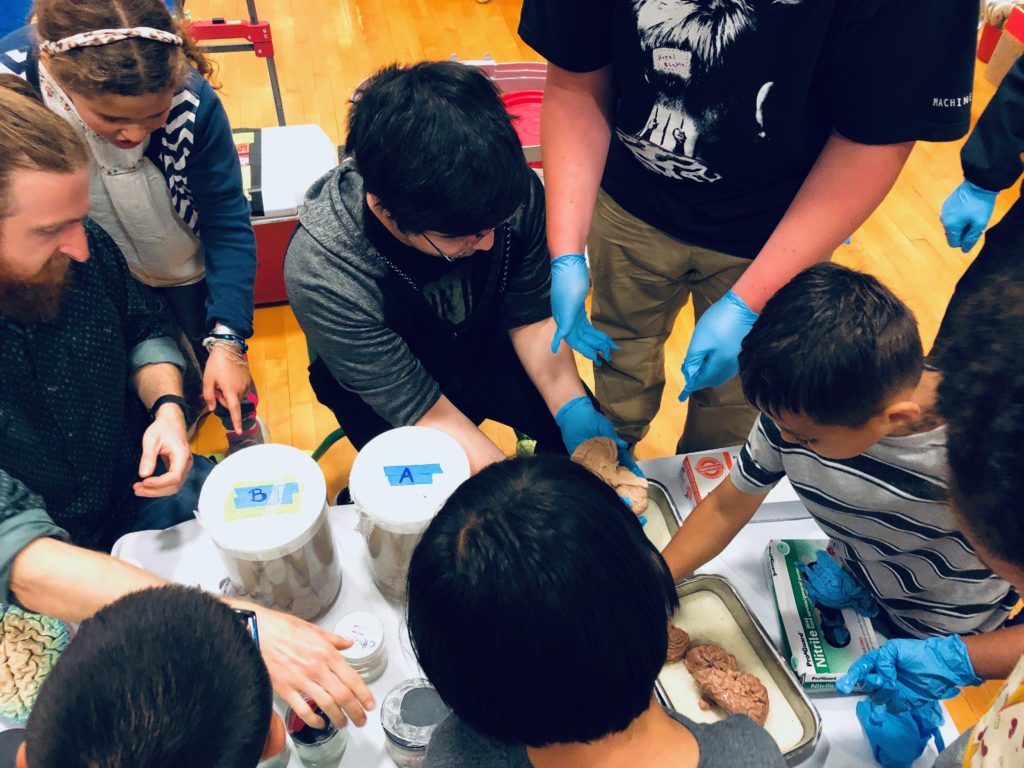
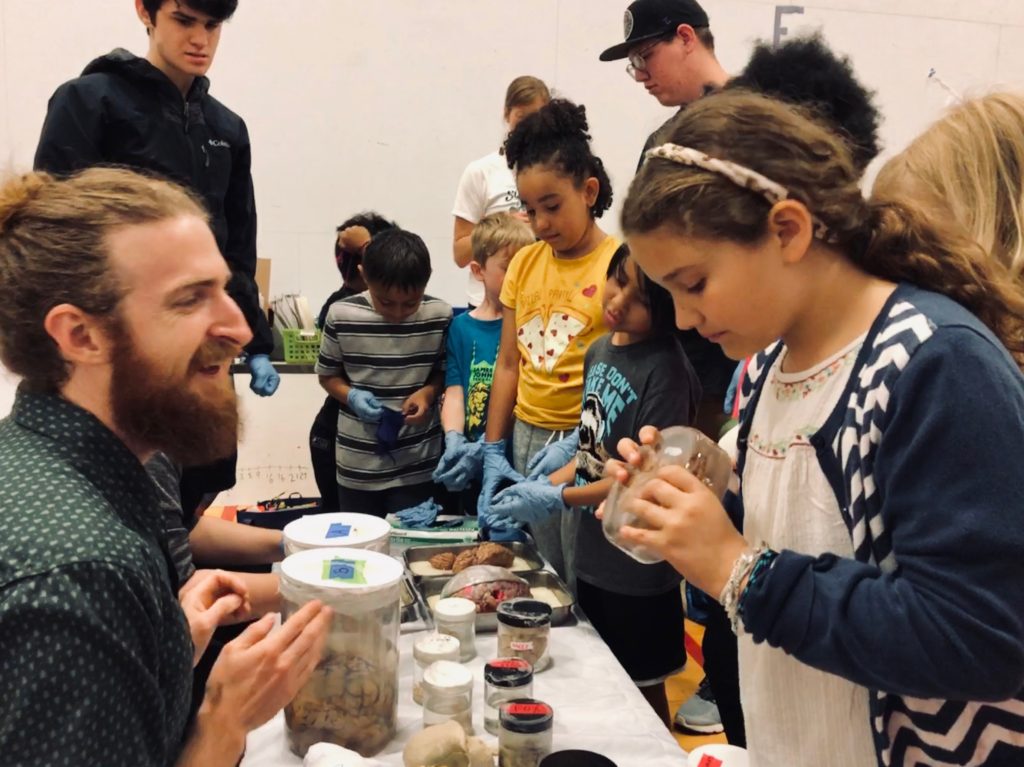
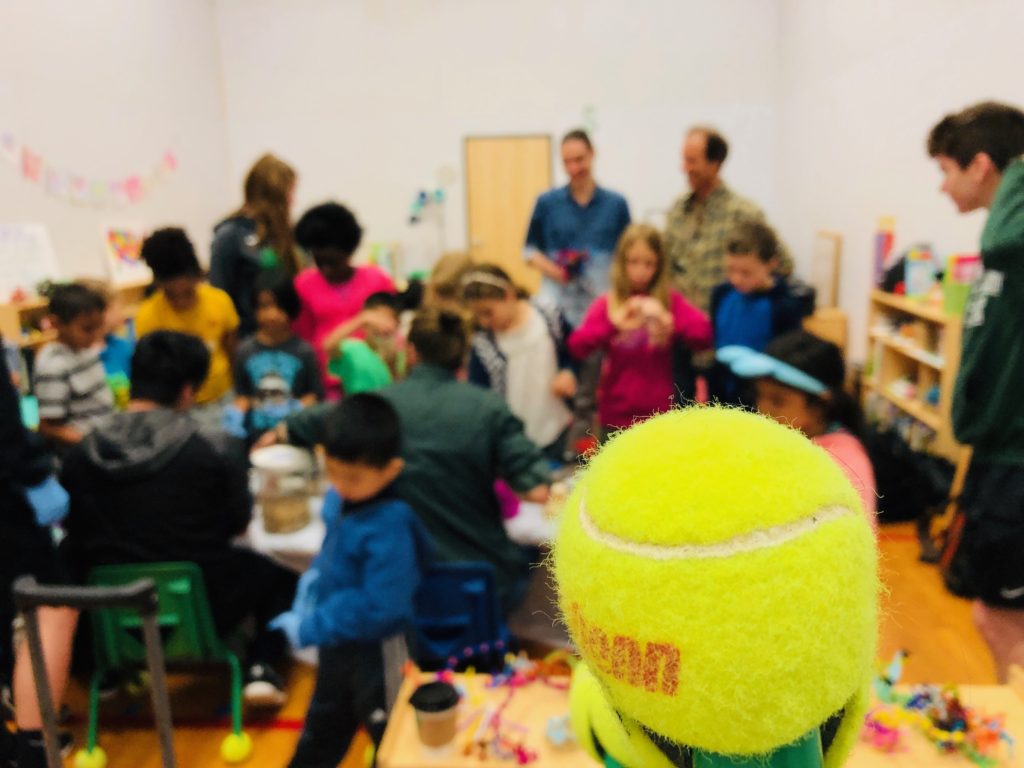
“Why do I feel hungry – is there a part of my brain that makes me hungry?“
LEARN MORE: Brain regulation of appetite and satiety
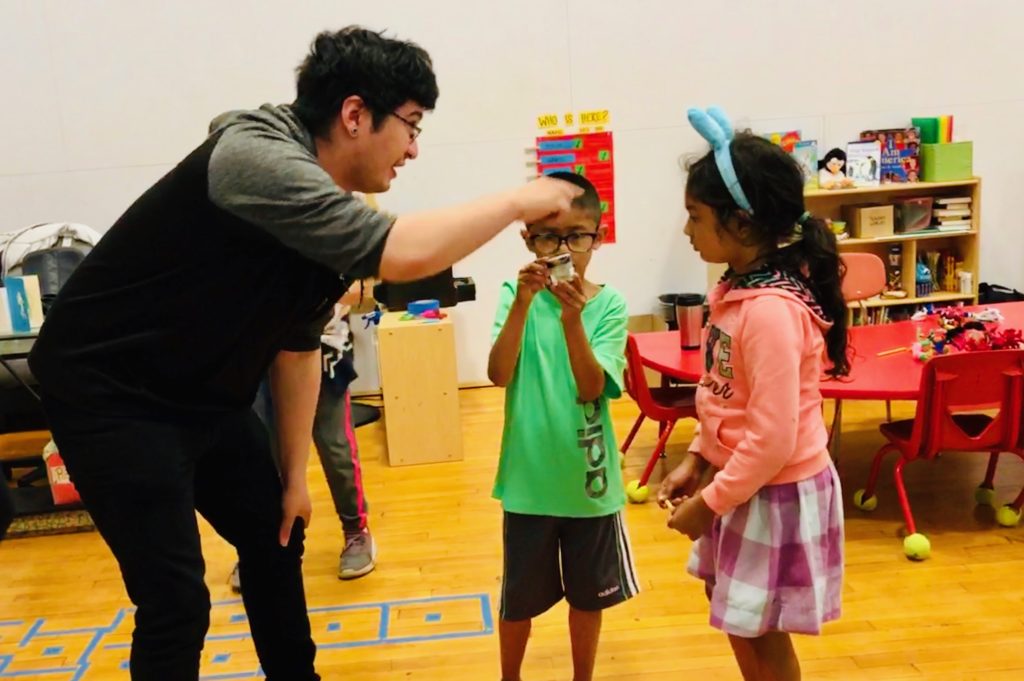
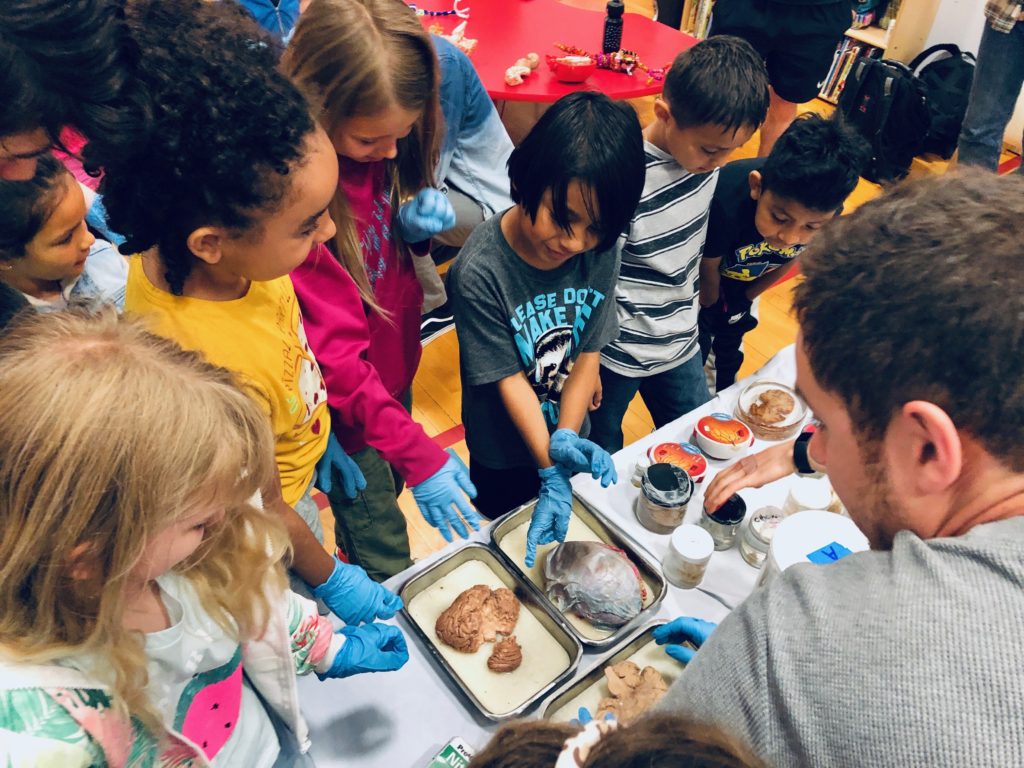
“How does memory work?”
LEARN MORE: White Matter on Wy’East
We also talked about how brain areas connect with each other in long-range networks, and how different brain networks do different things; how certain regions in the brain’s temporal lobes, for example, let us recognize what objects we see (tennis rackets, for example, or faces – or brains!).

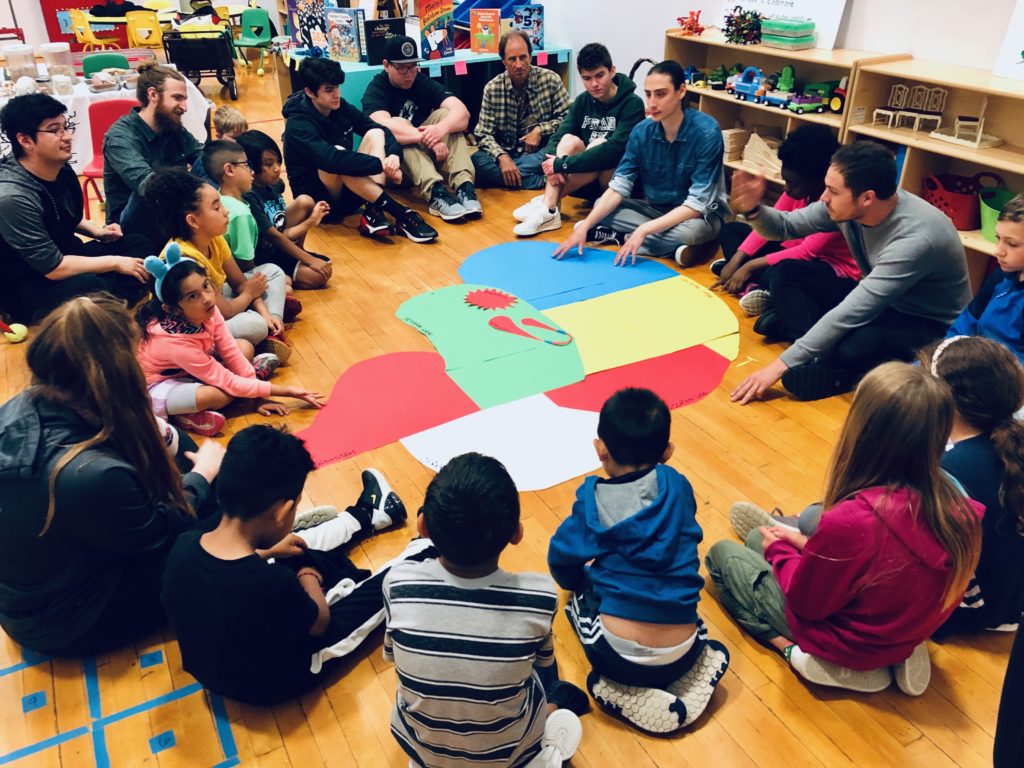
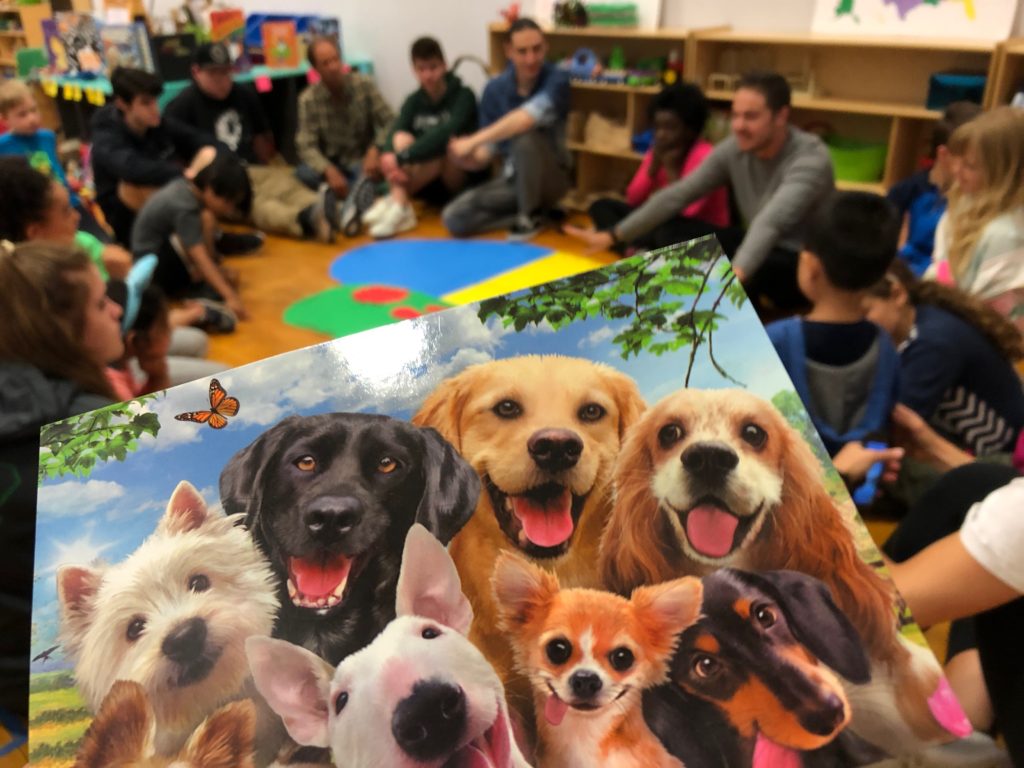
LEARN MORE: Tagging the temporal lobe
Tennis, of course, requires the development and coordination of multiple brain networks involved in perception, memory, attention, social cognition, decision making and motor control…
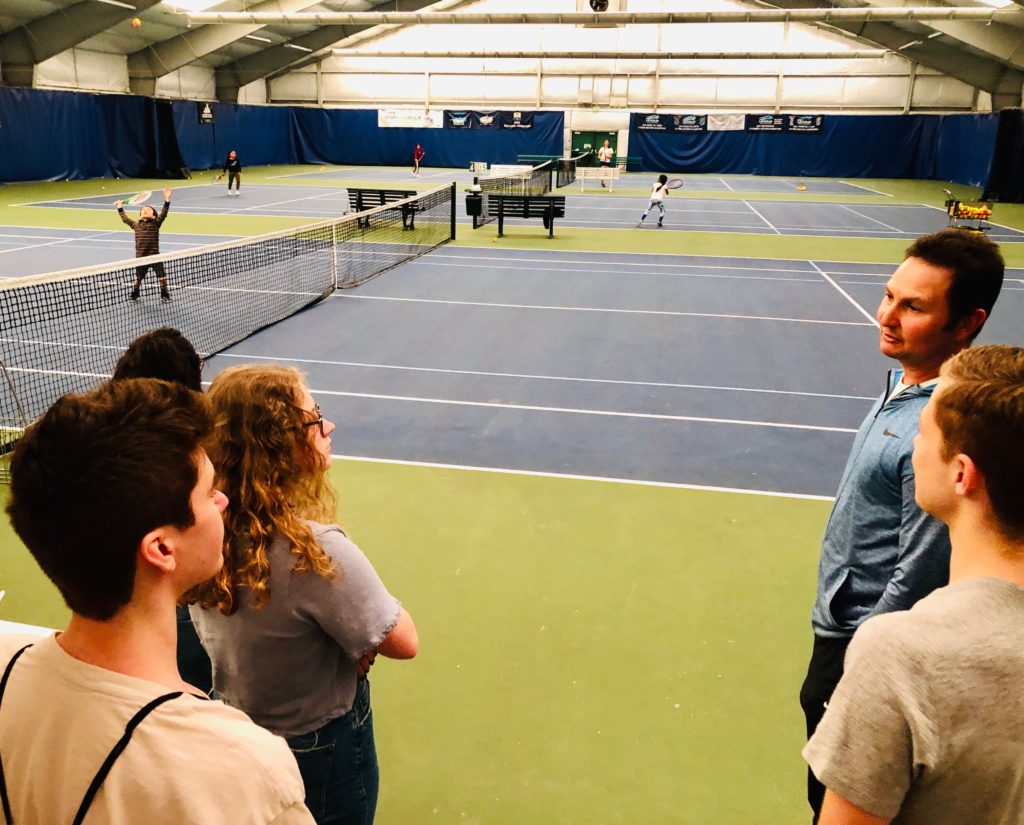
“The fifth set is not about tennis, it’s about nerves.” ―Boris Becker
LEARN MORE: How the brain reads body language to help people work together
LEARN MORE: Brain regions concerned with perceptual skills in tennis
LEARN MORE: Playing tennis with the cerebellum
“You’ve got to get to the stage in life where going for it is more important than winning or losing.” ―Arthur Ashe
We then grabbed our crayons and started drawing – directly on our brain map – how we might explain to others what these different lobes, or the cerebellum, or the amygdala actually do…
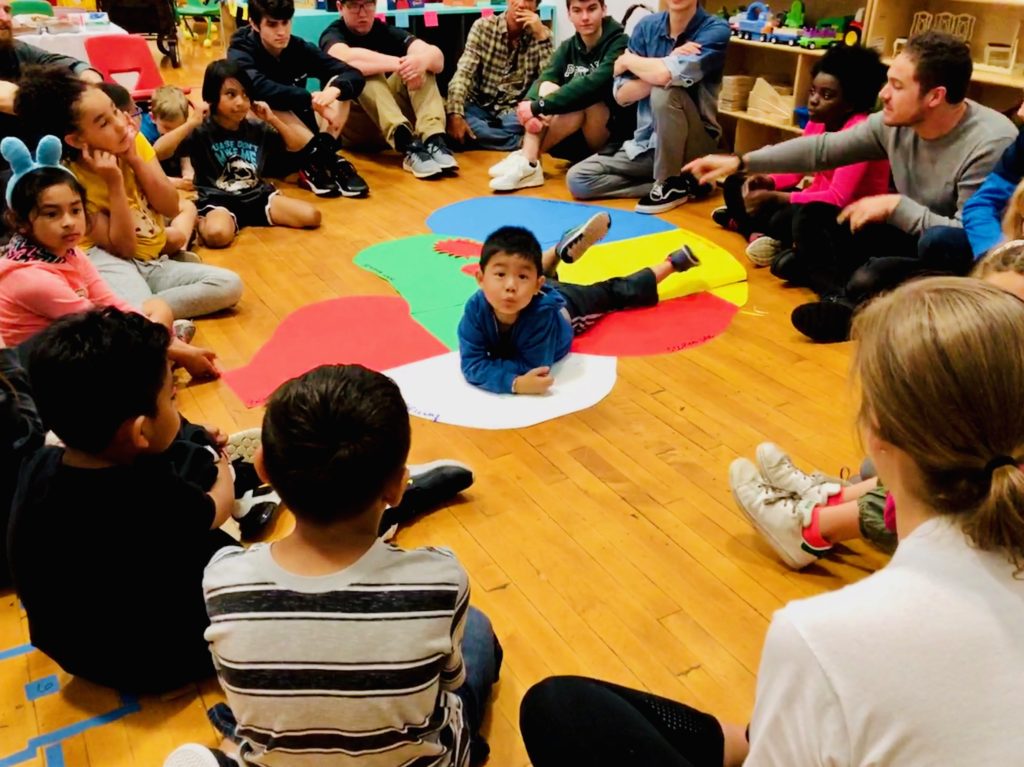
One boy was clearly in love with maps, and already knew the name of every U.S. state! He was very curious about memory and the brain, and decided to rest for a bit in our hippocampus. We’re including a colorful Brodmann map of the brain below for him to pore over next…

LEARN MORE: Brodmann: a pioneer of human brain mapping—his impact on concepts of cortical organization
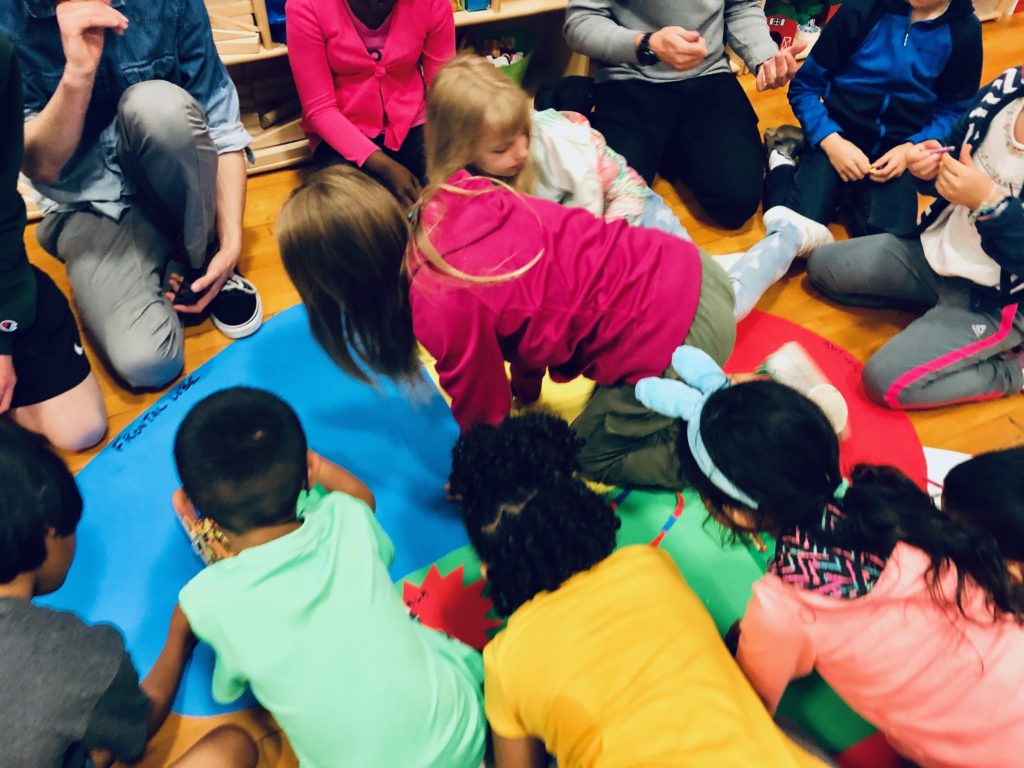
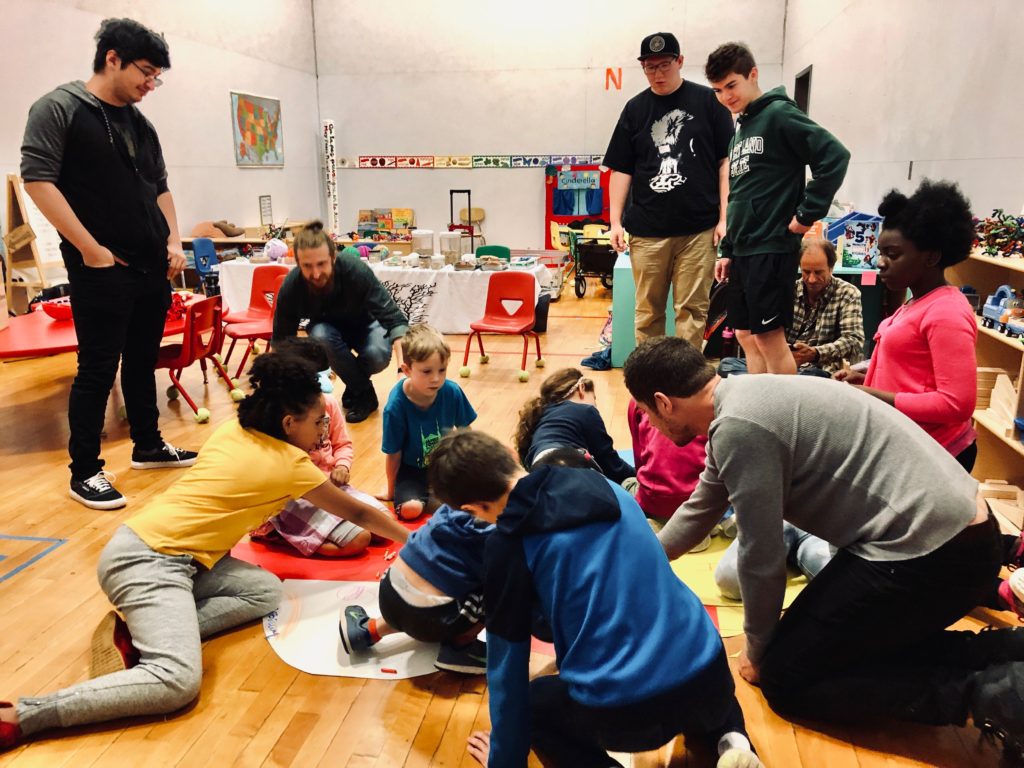

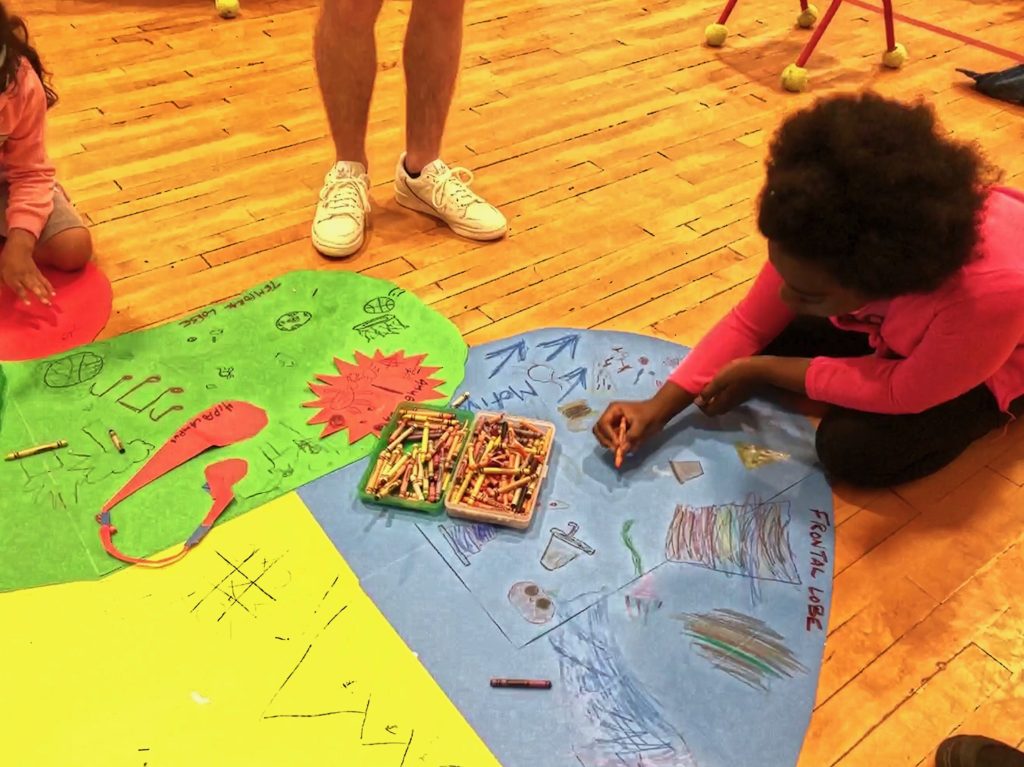
We also wired ourselves up to explore how neurons and muscles cells utilize electricity for both communication and contraction, thanks to the depolarizing Human to Human Interface from Backyard Brains…
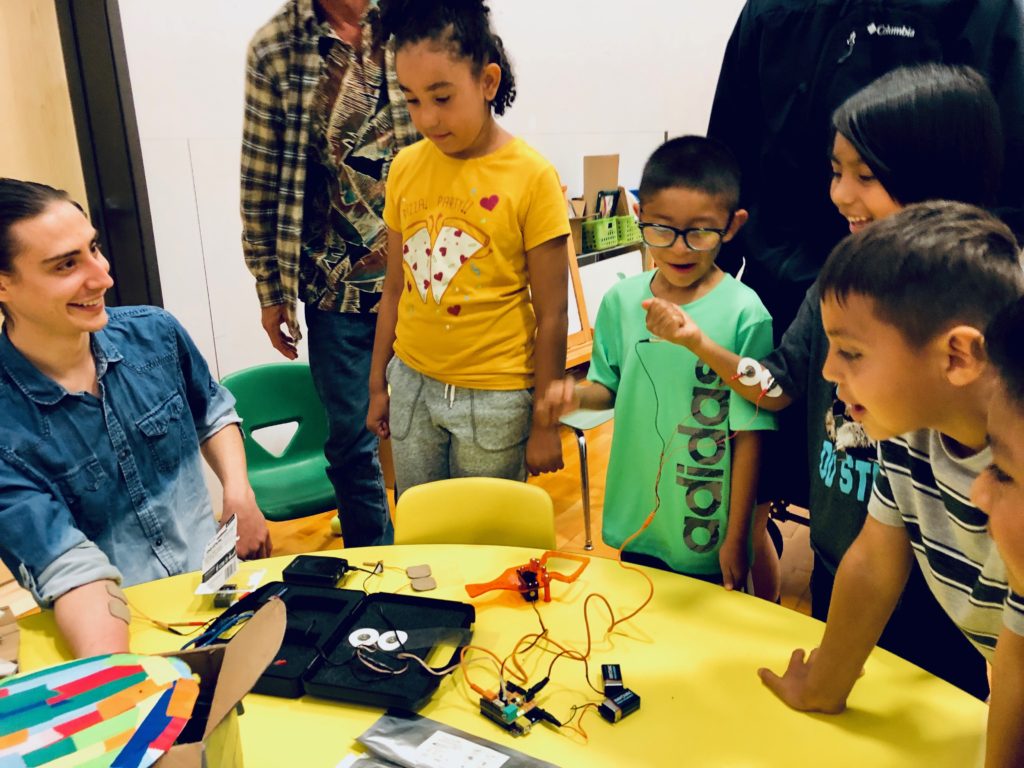
LEARN MORE: Brain Hacking Is Electric!
With all these engaging art and neuroscience activities, and all our outreach volunteers, all of us focused on the brain and open to any questions, interests or ideas – there are many opportunities for motivating, social, joyous, student-directed learning…

And thanks to the efforts of Dr. Stephanie Cacioppo, NW Noggin is headed to Chicago! This fall we’ll join the Society for Social Neuroscience to celebrate their ten year anniversary, and do more public outreach (and present again at the Society for Neuroscience (SfN) conference, too)…
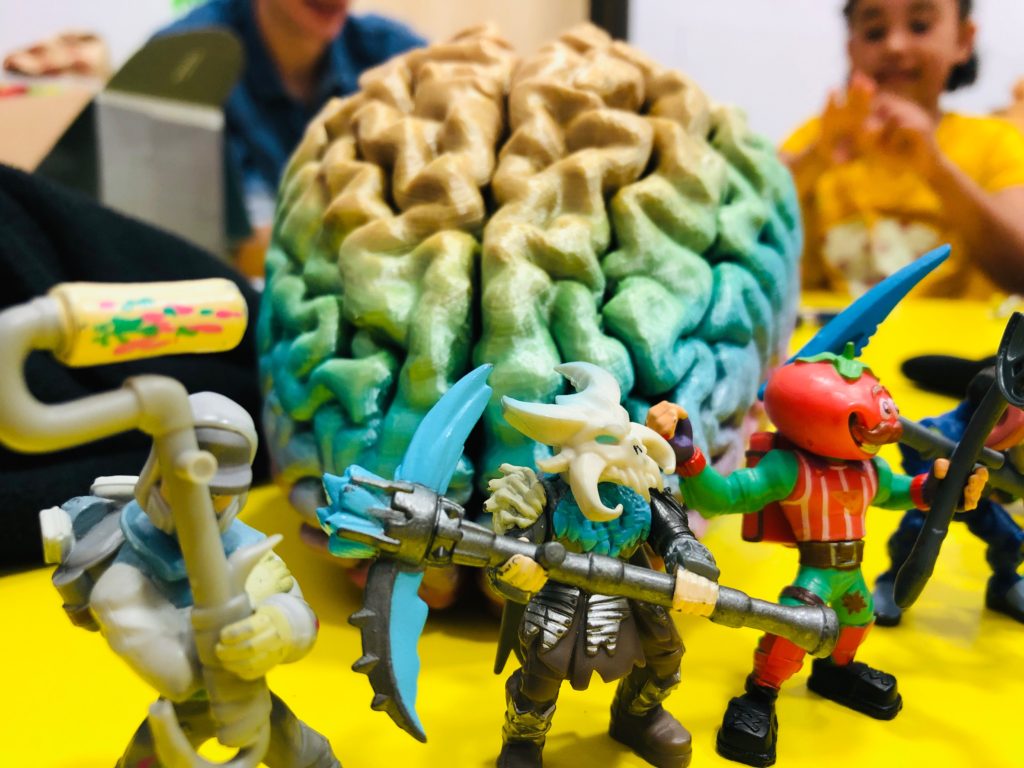
On Thursday, October 17 from 1:30 – 4:00pm, NW Noggin will participate in the first Social Neuroscience Fair and discuss STEAM outreach, examine brains, make cerebral art, consider neuroscience questions and introduce our informed graduate and undergraduate volunteers to Chicago Public School students at Chicago’s Museum of Science and Industry..!

Many thanks to Jorge, Mikayla, Stephanie (Haas), Stephanie (Cacioppo) and the enthusiastic young people at Portland Tennis and Education for a warm welcome, and more exciting connections to come...


